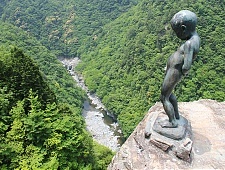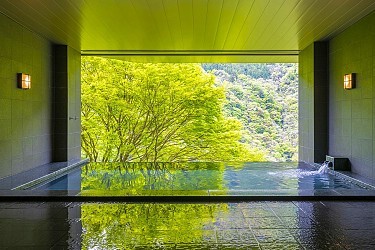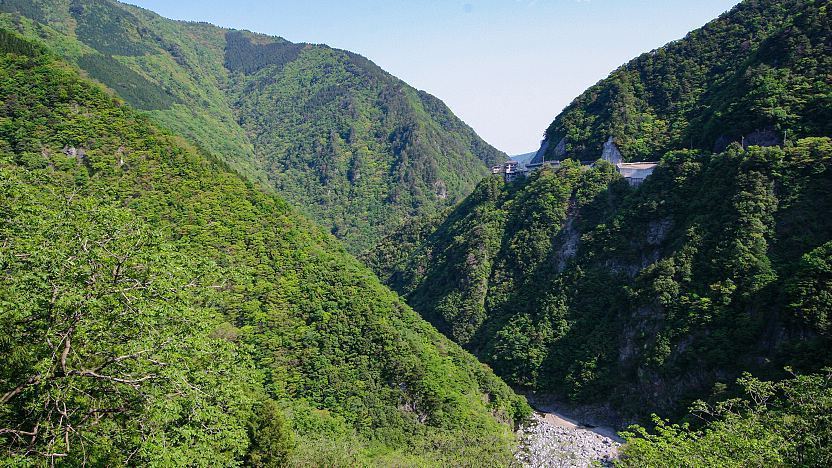
The Iya Valley (æcÆJīk, Iyakei) is a secluded, mountainous valley along the Iya River in western Tokushima Prefecture. Its steep forested slopes are connected to the outside world by a winding, sometimes unbelievably narrow mountain road that navigates the valley. While the deeper parts of the Iya Valley may be difficult to access, this remoteness is what draws visitors to the area to experience a traditional, rural culture that is difficult to find in modern Japan.
Historically the Iya Valley has been a difficult place to enter and has long served as a refuge for members of the defeated Taira Clan (also known as Heike) who escaped to the region toward the end of the 12th century after losing the Gempei War (1180-1185). Their descendants can still be found around the tiny mountain villages that dot the region.

In more recent times, the Iya Valley has been promoted by Alex Kerr, author of "Lost Japan", who fell in love with the area after a visit in 1971. He bought and restored an old farmhouse, Chiiori, which is now operated as a lodging to introduce people to traditional Japanese life. Kerr was later also involved in opening up an entire collection of restored traditional homes, known as the Togenkyo Iya, as tourist lodgings in a village along the steep valley.
The Iya Valley is commonly divided into two areas. Nishi Iya (West Iya) around the entrance to the valley is slightly more developed and more accessible with relatively frequent buses to some of the major attractions. Oku Iya (Inner Iya, also called Higashi Iya or East Iya) lies further back into the valley and is difficult to reach without a rental car or other means of private transportation. The following attractions are listed relative to their location within the valley.
Nishi Iya
Oku Iya
Getting there and around
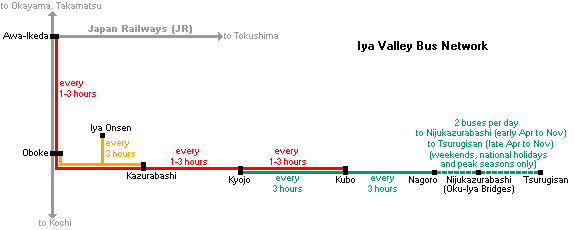
Nishi Iya is accessible by buses from Awa Ikeda Station (one bus every 2-3 hours) and Oboke Station (one bus every 1-2 hours). Some buses operate as far as Kubo in Oku Iya, where travelers can transfer to a bus further into the valley. The Oku-Iya Kazurabashi Bridges and Mount Tsurugi are served only on weekends and during peak seasons from April to November.
A rental car is recommended, especially for visiting the less traveled Oku Iya area. Note that the roads are very narrow and have frequent blind curves, which makes driving both hazardous and slow. A few rental outlets are available around Oboke and Awa-Ikeda stations.
How to get to and around the Iya Valley
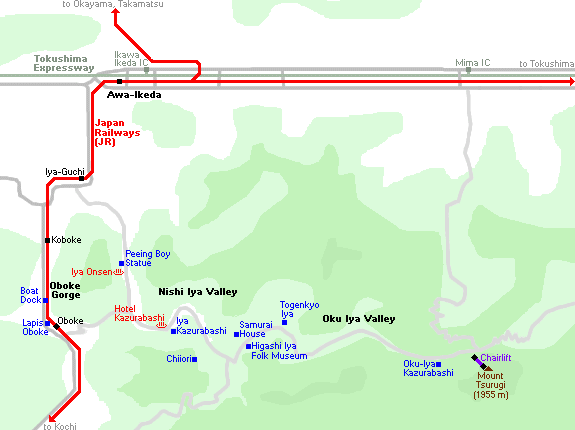
Questions? Ask in our forum.
Links and Resources
English
Hotels around Iya Valley
-
-
![]() SponsoredHotel Iya OnsenAn onsen ryokan commanding Iya Valley. Enjoy new bath with amazing view and riverside bath 170m down by cable car. Free shuttle to/from JR Oboke Sta. Wi-Fi available.View siteSponsored
SponsoredHotel Iya OnsenAn onsen ryokan commanding Iya Valley. Enjoy new bath with amazing view and riverside bath 170m down by cable car. Free shuttle to/from JR Oboke Sta. Wi-Fi available.View siteSponsored
-
